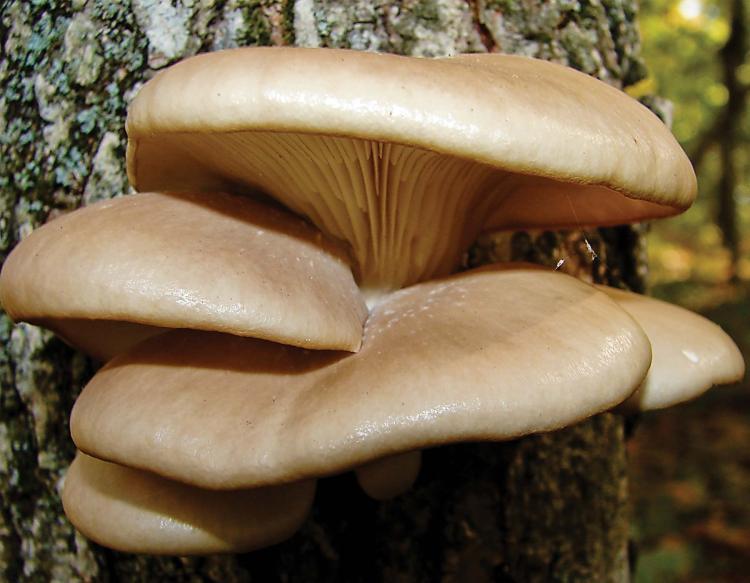
Oyster mushrooms grow in overlapping, shelf-like clusters on stumps, logs, and trunks of deciduous trees especially during damp weather.
Broad, fleshy, shell-shaped caps are whitish to grayish to tan in color, protecting narrow membranes below, called gills.
The mycelium, or network of fungal cells, of oyster mushrooms lives on dying and decaying wood, killing and eating some types of nematodes – or parasites that can damage plant roots. The nematodes provide the fungus with nitrogen, which is otherwise difficult to break down in wood.
The fungus plays an important ecological role in supplying soil with nutrients, and its ability to trap nematodes is being studied as a possible biocontrol to prevent certain plant diseases.
This prized culinary mushroom also holds many proven health benefits and is easily cultivated at home, though those foraged in the wild often pack the best flavor.
Researchers are even studying this fungus as an environmentally responsible substitute for Styrofoam, when grown in container-shaped molds.
As always, when foraging wild mushrooms, be sure of your identification, and only eat small quantities the first time you try it to avoid potential reactions.
Learn more about oyster mushrooms and tips on identifying other wild mushrooms in Missouri with the Missouri Department of Conservation’s online field guide.
























